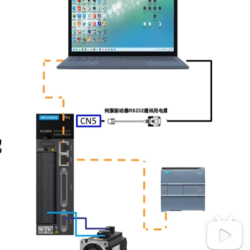-
Overview of Burden of Proof Allocation
According to Article 2 of the Supreme People’s Court’s Several Provisions on Evidence in Intellectual Property Civil Proceedings, in patent infringement cases, the plaintiff is responsible for the initial burden of proof, which requires them to present preliminary evidence to support their claims. For example, the plaintiff must show that the accused infringing technical solution contains the same or equivalent technical features as those specified in the patent claims, thus falling within the scope of the patent’s protection. Once the plaintiff provides adequate preliminary evidence, the burden of proof shifts to the defendant, who can then raise defenses such as non-infringement or prior art and must substantiate these claims with evidence.
Judges also have some discretion in determining how the burden of proof is allocated. Throughout the trial, judges can assign the burden based on the arguments presented by both parties, the facts that need to be established, the evidence available to each side, and their ability to present that evidence. This method encourages parties capable of providing evidence to do so, thereby avoiding situations where critical facts remain unproven.
-
Circumstance and criteria for the reversal of burden of proof
In situations concerning patent infringement linked to new product methods, the Patent Law establishes an alternative burden of proof system that shifts the typical distribution. According to Article 66 of the Patent Law, when a patent pertains to a manufacturing method for a new product, the entity or individual producing the same product must demonstrate that their manufacturing method is distinct from the patented process. However, this reversal is contingent upon the plaintiff initially providing evidence that the product made using the patented process is indeed new and that the defendant’s product is identical to that produced by the patented method. Therefore, the plaintiff must still fulfill their initial burden of proof before the burden can be reversed.
The criteria for applying this reversal are theoretically more stringent than those for new product process patents, necessitating a more rigorous initial burden of proof from the plaintiff. Article 3 of the Supreme People’s Court’s Several Provisions on Evidence in Civil Litigation of Intellectual Property Rights states that if the product made by the patented process is not new, the plaintiff must provide evidence to establish: (1) that the defendant’s product is the same as that produced using the patented process; (2) a higher likelihood that the defendant’s products were made using the patented process; and (3) that the plaintiff made reasonable efforts to prove the defendant’s use of the patented process. Once the plaintiff presents this evidence, the court may then require the defendant to demonstrate that their manufacturing method differs from the patented one. However, the determination of facts (2) and (3) may largely depend on the trial judge’s interpretation of the plaintiff’s evidence.
Judicial practice indicates that in patent infringement disputes, the plaintiff must provide sufficient evidence to suggest that the alleged infringement likely falls within the patent’s protection scope before they can be deemed to have met their preliminary burden of proof, after which the burden shifts to the defendant or is reversed.
-
Judicial Cases
-
If the plaintiff does not present sufficient evidence to demonstrate that the alleged infringing technical solution falls within the patent’s protection scope, the plaintiff will face negative consequences for lack of evidence.
| Case 1 | In the infringement dispute involving Zhongshan Haomei Electronic Plastic Products Co., Ltd. and Guangdong Baoyue Xingchen Optoelectronics Technology Co., Ltd. (2019) Zui Gao Fa Zhi Min Zhong 76, the Supreme People’s Court determined that the claims of the utility model patent for a microwave induction device include not just identifiable parts such as lighting fixtures and antennas, but also various modules with names and functions that are not easily recognizable. The court highlighted the need for a circuit diagram of the disputed product to make a proper comparison with the patent claims. As the plaintiff, Haomei Company was required to present evidence of infringement; however, the circuit diagram it provided did not pertain specifically to the product accused of infringement. As a result, Haomei failed to fulfill its initial burden of proof and faced negative repercussions for not supplying sufficient evidence. |
| Case 2 | In Liaoning Lante Technology Development Co., Ltd. v. Shenyang Coking Coal Co., Ltd. (2019) Zui Gao Fa Min Shen 3515, the Supreme People’s Court noted that while a previous judgment found Shenyang Coking Coal Company had infringed the patent, this did not imply ongoing infringement. Lante Company, as the plaintiff, bore the initial burden of proof. The evidence presented did not sufficiently demonstrate that Shenyang Coking Coal Company utilized the patented method, leading the court to dismiss Lante’s claims. |
| Case 3 |
In Dongguan Zhonghou Intelligent Machinery Co., Ltd. v. Shenzhen Weiguo Intelligent Automation Equipment Co., Ltd. No (2019) Zui Gao Fa Zhi Min Zhong 67, the Supreme People’s Court ruled that Zhonghou Company, as the plaintiff, failed to preserve evidence and confirmed that the physical object of the alleged infringement no longer existed. The court stated that Zhonghou Company did not meet its burden of proof, as the evidence on record was insufficient to establish that the alleged infringing product fell within the patent’s protection scope. |
-
If the plaintiff presents initial evidence suggesting that the accused technical solution probably falls under the patent’s protection, the burden of proof otherwise shifts to the defendant.
| Case 1 | In the case of Lanzhou Shengyasi Technology R&D Co., Ltd. v. Gansu Hongda Aluminum Profile Co., Ltd. Case No.: (2019) Zui Gao Fa Zhi Min Zhong No. 763, the Supreme People’s Court recognized the difficulties patent holders encounter in gathering evidence. The court found that Shengyas Company had fulfilled its initial proof requirement by submitting brochures and notarized documentation of the allegedly infringing product. The defendants did not provide enough counterevidence, which resulted in unfavorable outcomes for them. |
| Case 2
|
In Beijing Baidu Netcom Technology Co., Ltd. v. Beijing Sogou Technology Development Co., Ltd. Case No.: (2018) Jing Min Zhong No. 498, the Beijing Intellectual Property Court decided that the burden of proof could change depending on the evidence provided. Sogou Technology was able to show that the alleged infringing product had the features described in the patent, which led Baidu Netcom to explain the distinctions between its product and the patent. Baidu’s inability to present sufficient evidence resulted in negative repercussions for them. |
-
For patents related to manufacturing methods, once the plaintiff has met its initial burden of proof, the burden shifts to the defendant to demonstrate that their method differs from the patented process.
| Case 1 | In Huarui Tongkang Biotechnology (Shenzhen) Co., Ltd. v. Nanjing Norman Biotechnology Co., Ltd. (Case No.: (2020) Zui Gao Fa Zhi Min Zhong No. 342, the Supreme People’s Court ruled that the accused infringer must prove that their manufacturing method is distinct from the patented process. Huarui Tongkang Company did not establish that the disputed products were “new products,” nor did it prove that Norman Company’s products were the same as those produced under the patented process, resulting in the court not supporting Huarui Tongkang’s claims. |
-
Summary
In patent infringement lawsuits, the plaintiff has the duty to prove the facts surrounding the alleged infringement. Generally, the plaintiff must provide at least some initial evidence to show that the accused technology is covered by the patent. If the plaintiff successfully meets this initial requirement, the burden of proof then transfers to the defendant. If the plaintiff does not present enough evidence, they may face adverse outcomes.
In cases concerning patents for manufacturing processes, there is a “reversal of the burden of proof.” However, the plaintiff must first satisfy their initial burden. For a patent related to a new product manufacturing method, the plaintiff needs to prove that the product created using the patented process is indeed new and that the defendant’s product is identical to that produced by the patented method. Only after this can the burden shift to the defendant to demonstrate that their method is different from the patented one. For patents on non-new product processes, the plaintiff must show that the defendant’s product is the same as that produced by the patented process, that it is more likely to have been made using the patented method, and that reasonable efforts were made to establish the defendant’s use of the patented process.
In conclusion, both parties should actively present evidence whenever possible. The party with the burden of proof should strive to provide preliminary evidence that supports their claims, which will help shift the burden of proof to the other party and improve their chances of a favorable outcome in court.


